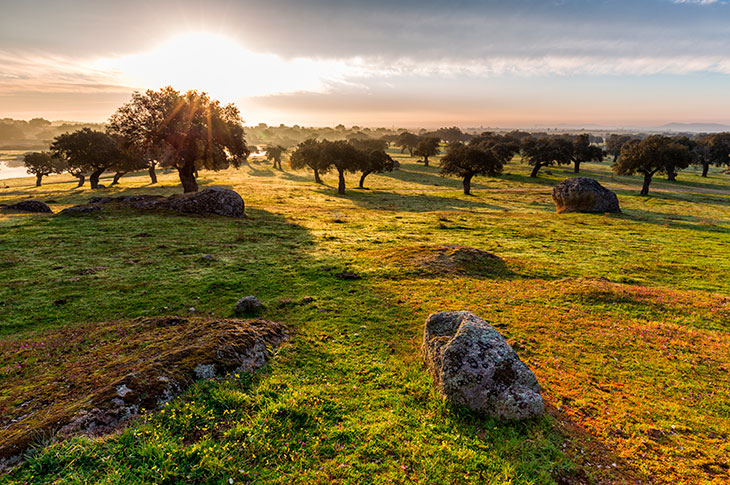Extremadura: an ecotourism paradise in Southern Europe
The destination combines nature, culture and sustainability to offer authentic and responsible experiences.
Extremadura has established itself as a benchmark in ecotourism and sustainability, offering a wide range of opportunities for the development of environmentally friendly activities in the southwest of Spain, between Portugal and Andalusia. The region has more than 50 protected natural areas, with a particular mention for the so-called Unesco Environmental Corridor: the three Biosphere Reserves of Monfragüe National Park, Tajo Internacional Natural Park and La Siberia and the Villuercas-Ibores-Jara Geopark. Extremadura’s biodiversity is remarkable, with landscapes ranging from meadows and centuries-old forests to sierras and plains that provide a habitat for a rich fauna and flora. This diversity allows for numerous outdoor activities, such as bird watching, stargazing, hiking and cycle touring.

The region also has four Natural Greenways (Vía de la Plata, Monfragüe, Vegas del Guadiana and Mina La Jayona), totalling 170 kilometres, ideal for nature and sport lovers. Extremadura’s tourist attractions are complemented by a rich cultural offer. Cities such as Cáceres and Mérida, and the Monastery of Guadalupe have been declared World Heritage Sites by UNESCO, and those looking for modern architecture, landscaping and state-of-the-art religious art should visit one of the 63 colonisation villages (Pueblos de Luz) built in the mid-20th century. The region is renowned for its gastronomy, with iconic products such as Iberian ham and various cheeses. The Sustainable Gastronomic Routes offer guided itineraries to livestock farms, cheese dairies, oil mills, wine cellars and ham-drying sheds, experiences that combine the tasting of local products with visits to local producers and natural landscapes. At the same time, the destination has improved accessibility. Through tools such as mobile apps and audio guides in nature parks, visitors can access detailed information and self-guided routes.

